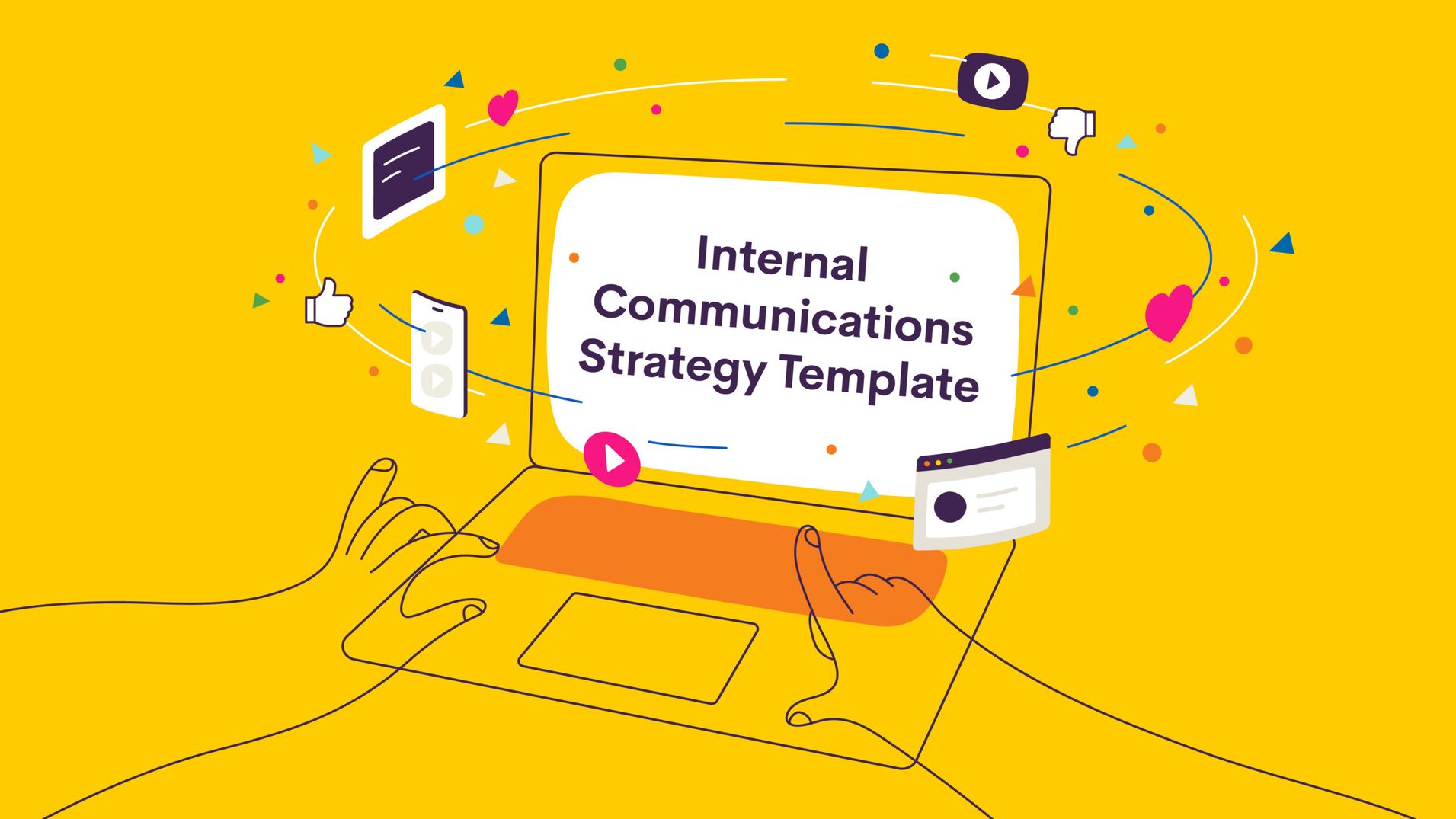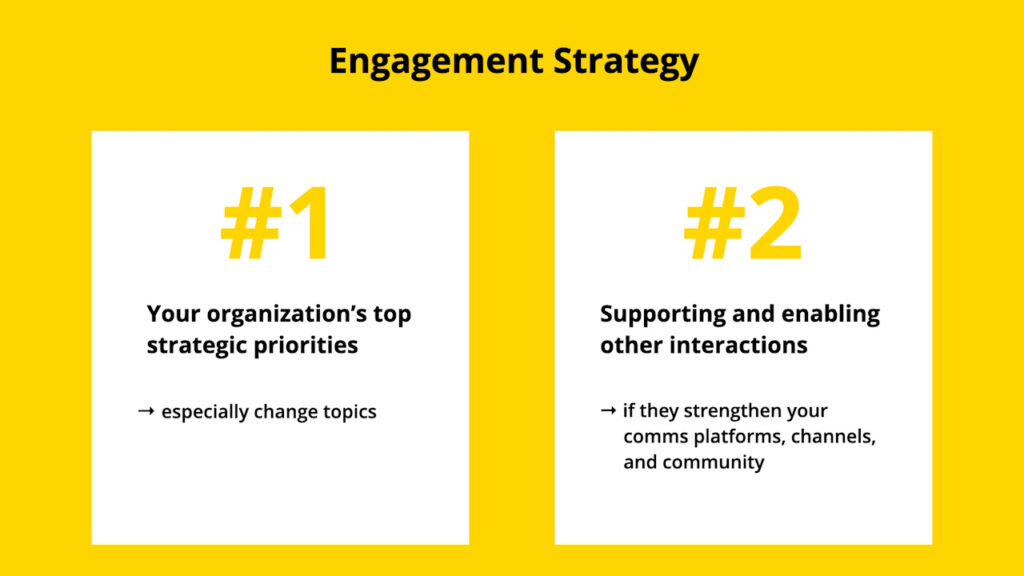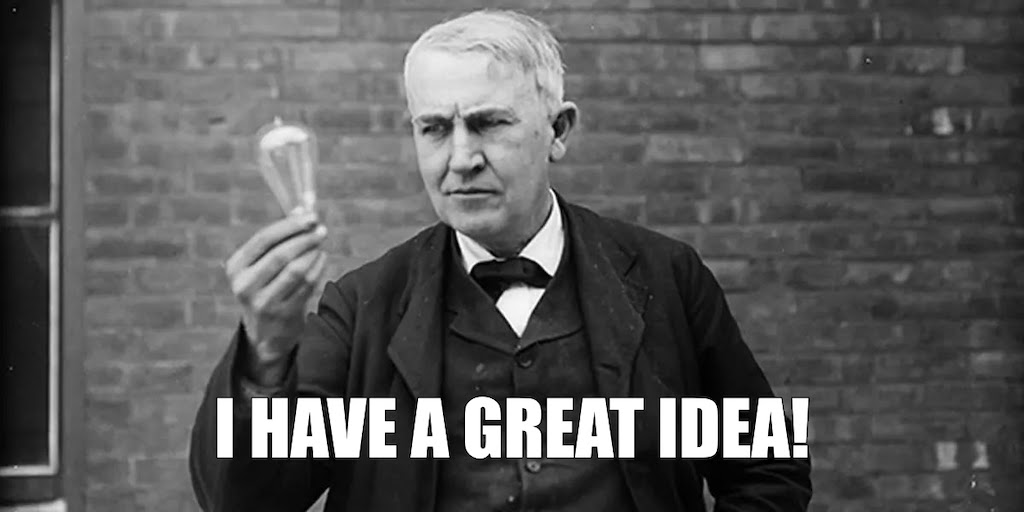How to Create an Internal Communications Strategy [+ Free Template]

Internal communicators are expected to plan and execute large strategic campaigns, often without much lead time and zero budget. That’s where an internal communications strategy template can come in handy.
When you have to move fast, it can be hard to be strategic. Your approach feels rushed and your audience gets the short end of the stick.
You’re left stressed and wondering if all your work even hit the mark.

Well, communicator, it doesn’t have to be this way. With the right planning you can move from reactive to proactive, and from ad-hoc to strategic.
Not sure where to start? Our internal communications strategy template has you covered.
Use this internal communications strategy template to create a rock-solid employee communication strategy that will help you:
Get ahead of the pop-up requests and reactive comms that keep you stressed out and falling behind.
Be more strategic with how and what you share with your internal audiences.
Measure your work and document results to inform your strategy and your leadership team.
What is an internal communications strategy template?
An internal communications strategy template is a document with sections that walk you through the must-haves for any internal communications project. The template will help you stay focused on:
Why the project is important.
Who it’s for (your audience) and who is involved (your stakeholders).
What your planned approach is.
When to schedule for the best timing.
Where to focus your energy.
How to measure your success.
Why do you need an internal communication plan?
Creating an internal comms plan not only forces you to think strategically. It also gives you something tangible to share with your stakeholders and leadership team. That way, you can prove the value of all your hard work (and pitch for budget!).

Our employee communication strategy template will help you articulate your strategic approach, map out your tactics, and keep you focused on measurable results.
The internal communication plan template for business success
Step
Description
Example
Key Stakeholders
List the key stakeholders who need
to be involved. How do their needs
differ? Who can provide input?
Should there be a “fast response
team”?
Establish a higher
frequency of sync meetings between
Communications, HR, Corporate
Health Management, Works
Council, and Management to enable
quick decision making and fast
learning cycles.
Key Activities
What activities and campaigns can
be used to deliver the message?
Which non-critical activities should
be stopped?
Weekly status briefing;
Ask the CEO; Thank You Channel;
on-site Q&A; virtual town halls; fast
feedback and response channel for
health and safety issues; community
building activities.
Communications Team
What are the communications team’s
key resources? How could they be
bolstered by external help and local
part-time content owners?
Strengthen local content owner communities.
Communication Goals
What are the main goals of your
internal communication activities?
What do we want employees to do/
say/feel differently?
Clarify the current situation
and the planned way forward.
Make employees feel safe in their
work environment.
Provide up-to-date and clear guidance
about changing responsibilities,
activities, and policies.
High trust in leadership.
Strong sense of community and
shared purpose, despite widespread
work from home.
Stop any kind of fake news.
Key Messages & Stories
What are the main messages for
all employees? What are specific
messages for individual teams and
personas?
How do we as an
organization overcome this crisis and
what are our top priorities right now?
Communication Channels
What channels will be used to communicate with which target personas?
How could channels be improved to
support communication goals?
Intranet, employee app,
digital signage, etc.
Target Personas
With whom are you communicating?
How do their needs differ?
Which moments matter for them?
Factory workers need a
full understanding about health and
safety measures and an easy way to
ask questions and make suggestions
to improve procedures at their
workplace. An important moment will
be their initial return to the front line
after the lockdown.
Other segments: home office
workers; field-service staff; high-risk
area staff (i.e. healthcare workers);
leadership; etc.
Communications Budget
What is your communications cost structure? What changes to the budget are needed and why?
Save budget on non-critical activities; faster retirement of inefficient and slow communications channels;
faster launch of new digital channels
Track Results and Measure
How do you define success? What are the output and outcome metrics?
Output — regular CEO status updates; Outcome — pulse survey
shows strong trust in leadership, low number of health and safety concerns.
This internal communications strategy template helps you:
Map out your strategy to stay focused on the most impactful work.
Measure results so you can prove what is working and keep improving.
Share your strategy with stakeholders and show the value of all your hard work.
Refine and develop as you generate more insights and learnings from your strategic approach.
How to use an internal communications strategy template for your next comms project
We’ve designed this internal communications strategy template to support large-scale strategies as well as the smaller projects that often arise.
Large or small, it’s always good to have a documented strategy.
Work your way through the template, from top to bottom. It’s designed for the sections to build on each other. This will keep you focused on why you’re doing this work, who it’s for, and the steps you can take to reach your goals.
You can use this template for each new project that comes up. And remember, each smaller employee communication plan can support your big-picture goals and objectives.
Bonus: If you’re in a role where you do more than IC, the template can be used for external communication projects, too.
Section 1: Background
This is where you add background on your company, the number of employees you need to reach, past challenges you’ve faced with internal communications, and why the company needs this strategy.
Background is important to inform your strategy. It can also be helpful to use as talking points when you present your work.

In our ongoing quest to show how communicators are more than messengers, it’s important to present your strategy and its results to your team and to leadership. This gives you the opportunity to reflect on the successes and shortcomings with your team. And you can show off your strategic approach to high-level decision makers.
Section 2: Analysis
This is where you include a detailed review of the current state of your internal communications, including the comms challenges you deal with and how you currently communicate with employees.
You might include email, newsletters, tools like Slack, your intranet, etc. Also make sure to include town halls and leadership meetings.
This section typically includes a SWOT or PEST analysis.
Your analysis is important because it will show you what’s already working and where you need to focus your time and energy.
Section 3: Audience
List your primary internal audiences and include any data you have around their communication preferences.
Understanding your audience will inform your strategies and tactics as we’ll see in Section 6.
Section 4: Stakeholders
List all the stakeholders who will be involved in your strategy: HR, IT, etc.
You’ll want to make sure your stakeholders review your strategy before it’s final.
Section 5: Goals and Objectives
Your primary goal is what you want to achieve with your strategy (for example, increased employee engagement). Typically you’ll have between one and three goals.
Objectives are specific measurable achievements to help you reach your goal (for example, increase town hall attendance by 50%).

Section 6: Strategies and Tactics
Your strategies are what you plan to do to meet your goals and objectives. For example, use engagement technology in town halls.
Your tactics are specific actions you can take to meet your objectives. For example, use a voting app in town hall meetings to increase audience participation.
List how you’ll measure each strategy so that you can evaluate the effectiveness of your tactics and report back on your outcomes. You might conduct a follow-up survey, use analytics, etc.
Section 7: Evaluation Matrix
Use the evaluation matrix to line up your strategies, tactics, measurement, and results. This matrix will help make sure each section of your strategy is connected and results-focused. You can leave the “result” column blank for now and fill that in after you measure.
Done completing your internal communications strategy template? Go ahead and strategize!
Now that you have your strategy, you can handle all those pop-up requests with ease.
You’ve done your research. You understand what to do to reach your audience and your goals.
You have a clear focus.
No matter how many projects you’re balancing, we hope this template will help you build a solid — and successful — employee communication strategy.










